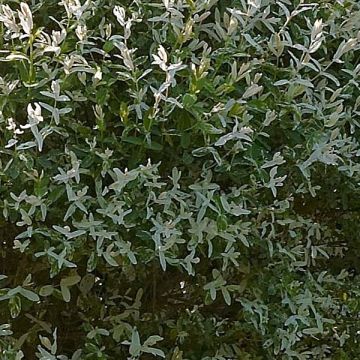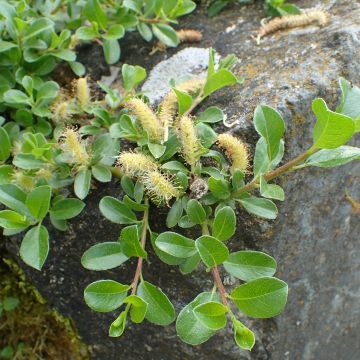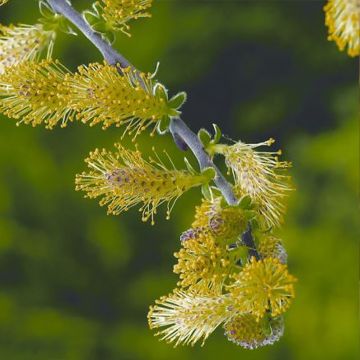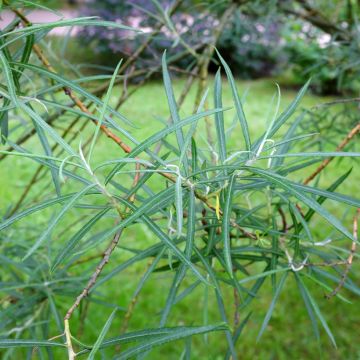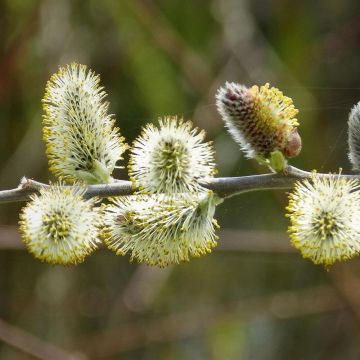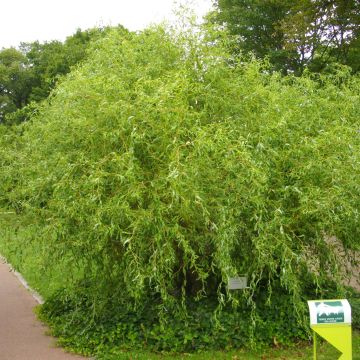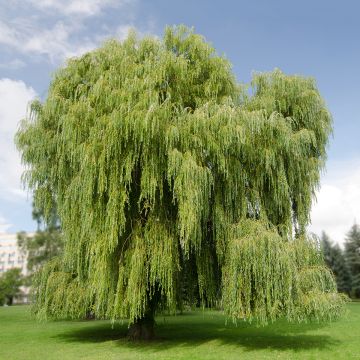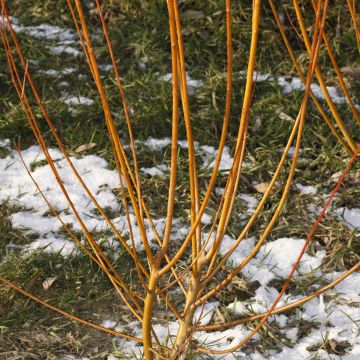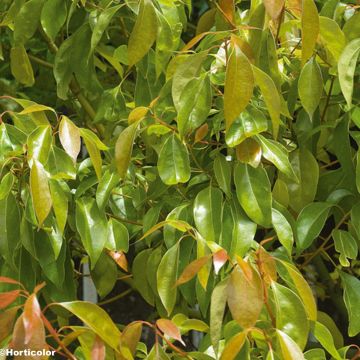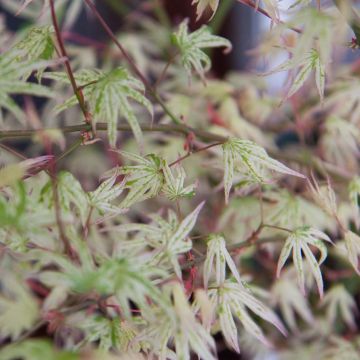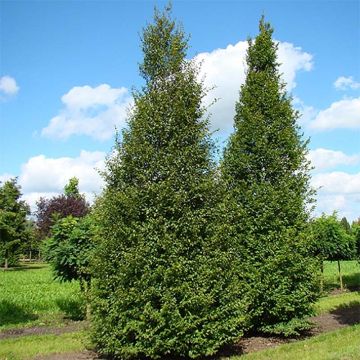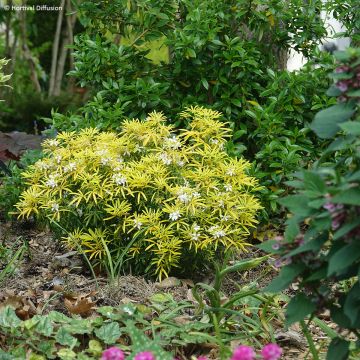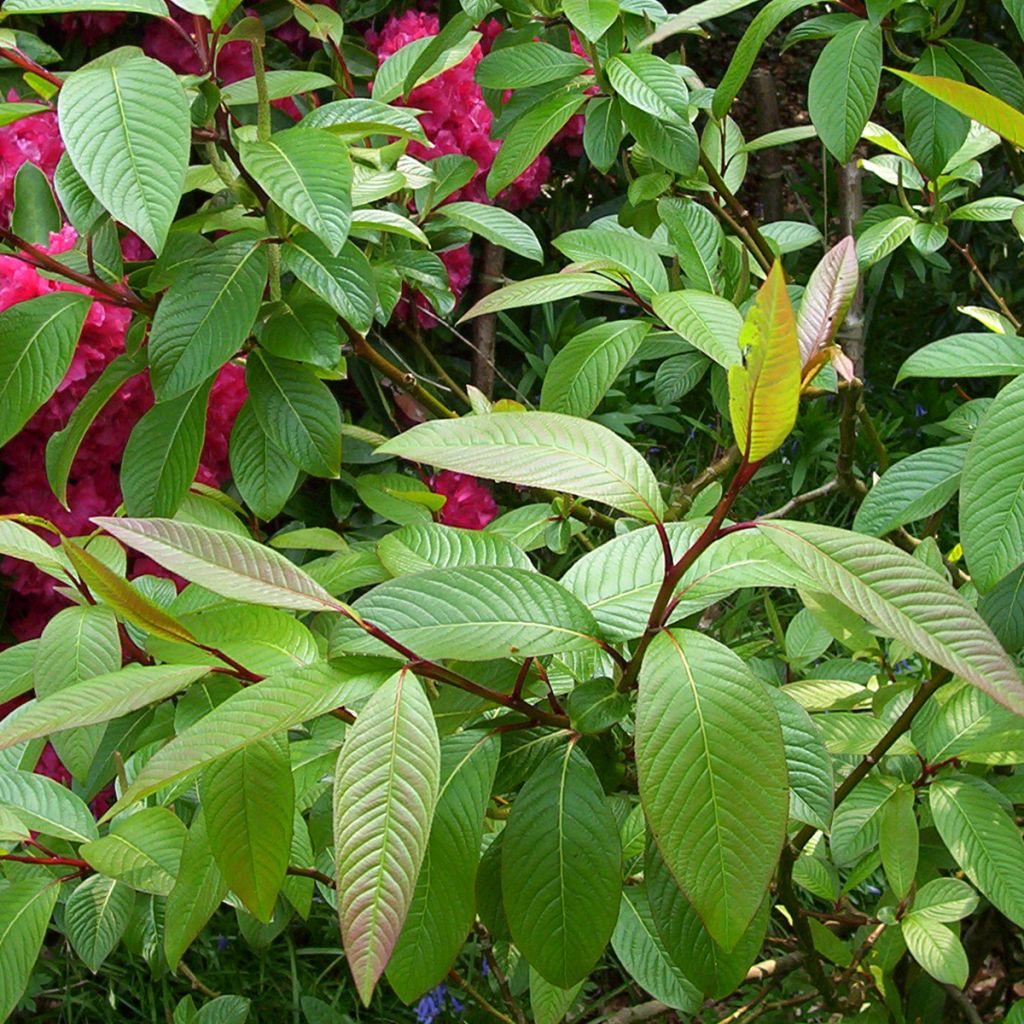

Salix moupinensis


Salix moupinensis
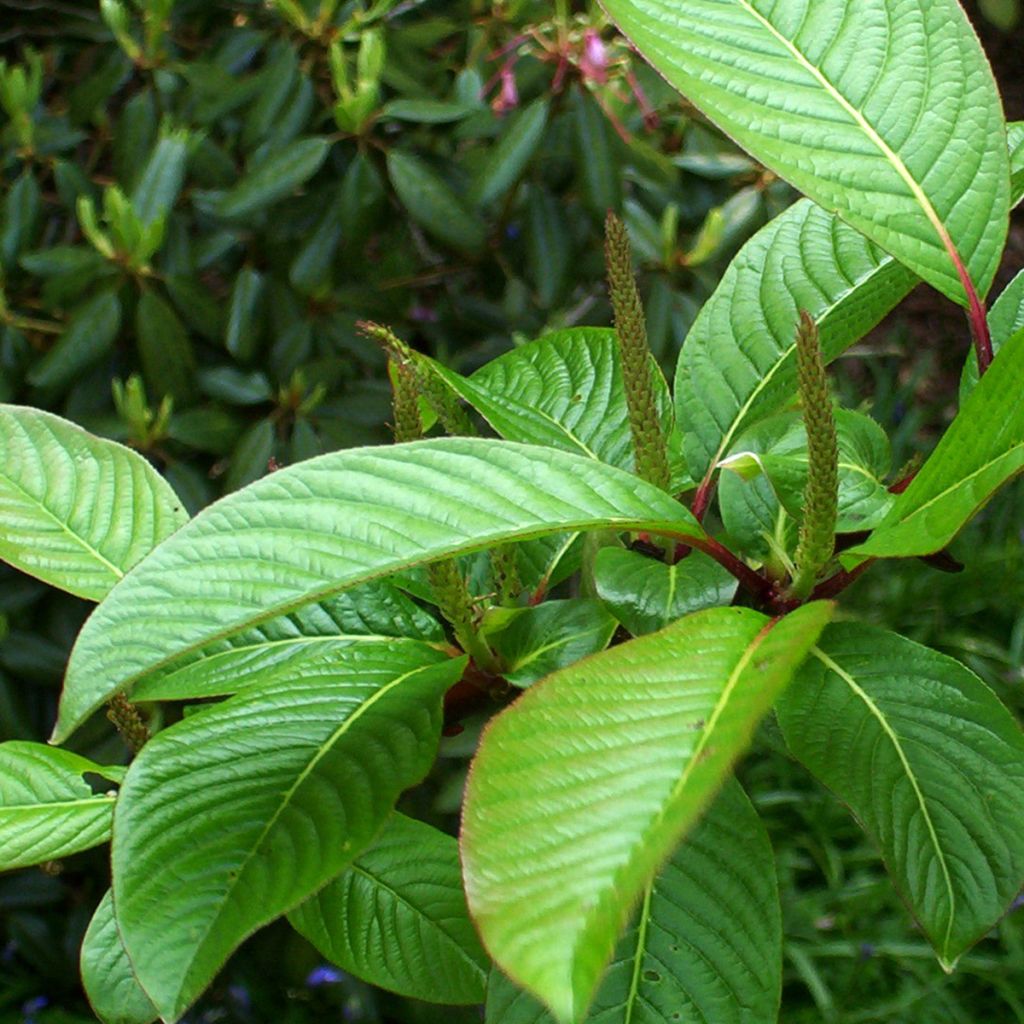

Salix moupinensis
Salix moupinensis
Salix moupinensis
Willow
Special offer!
Receive a €20 voucher for any order over €90 (excluding delivery costs, credit notes, and plastic-free options)!
1- Add your favorite plants to your cart.
2- Once you have reached €90, confirm your order (you can even choose the delivery date!).
3- As soon as your order is shipped, you will receive an email containing your voucher code, valid for 3 months (90 days).
Your voucher is unique and can only be used once, for any order with a minimum value of €20, excluding delivery costs.
Can be combined with other current offers, non-divisible and non-refundable.
Why not try an alternative variety in stock?
View all →This plant carries a 24 months recovery warranty
More information
We guarantee the quality of our plants for a full growing cycle, and will replace at our expense any plant that fails to recover under normal climatic and planting conditions.
Would this plant suit my garden?
Set up your Plantfit profile →
Description
Salix moupinensis is a slow-growing and compact, highly ornamental species. This shrub is remarkable for its shiny dark green foliage, carried by reddish branches which create a magical contrast with the long leaves. The upright spring catkins add a touch of height to this very architectural plant, perfect for small gardens. This hardy willow requires cool shelter from bright sunlight and rather moist soil.
Belonging to the Salicaceae family, like poplars, Salix moupinensis is a deciduous botanical species native to the mountainous areas of western Sichuan province and northern Yunnan in China. It can be found at an altitude between 1500 and 3000 metres, which explains its good hardiness. This species was discovered in 1869 by Father David, a prominent botanist who was very active in China and to whom a tree, the Davidia, and many species (Viburnum davidii, Acer davidii, etc.) have been dedicated. Introduced in 1910 in the famous Arnold Arboretum (Harvard University, Boston) by E.H. Wilson, and from there to Kew Gardens in London, this willow gradually spread to parks and gardens, while remaining relatively rare in cultivation. It is also often confused with Salix fargesii which it visually resembles.
Salix moupinensis is a slow-growing shrub, reaching a height of 1.50 to 2 m and a width of up to 3 m in about ten years, and not exceeding 3 m in all directions at maturity (reached between 20 and 50 years). The obovate to lanceolate leaves are very elongated, measuring from 6 to 13 cm in length, and are finely toothed on the edges. They are traversed by numerous very visible veins, arranged in fishbone patterns. With a beautiful dark green colour, their surface is shiny and provides a superb spectacle in contrast with the young mahogany-red branches that carry them. When they emerge in spring, the young tender leaves partially turn orange, further enhancing the ornamental aspect of the shrub. The leaf blade is supported by a short petiole, of the same mahogany-red as the branches. Flowering takes place around April, when the catkins, male or female depending on the plants, appear. Measuring approximately 6 cm long for males, twice that for females and greenish, they are erect towards the sky. Although not particularly decorative, they still have a certain sculptural interest by creating vertical lines on a silhouette dominated by horizontal lines due to the spreading leaves. The deciduous foliage falls in autumn.
Salix moupinensis is a superb shrub that is too little known, despite its great ornamental value. It is perfect for small gardens, provided it is given a location sheltered from intense sunlight and moist soil, as it dislikes drought. To create a beautiful scene at the edge of a wood, combine it with flowering shrubs such as the small Clethra alnifolia Ruby Spice, which does not exceed 1 m in height and offers beautiful fragrant pink flowers as well as lovely autumn colours in shades of yellow. The classic, yet always appreciated Aucuba japonica Variegata will provide evergreen foliage in winter, green speckled with yellow, and, provided there is a pollinating partner nearby, beautiful decorative red fruits. A few shade-loving perennials wisely placed at the base of your shrubs will complete your creation. The evergreen Hellebores with their superb winter blooms will delight you with their various colours depending on the varieties, while in spring, Caucasian Forget-me-nots, or Brunnera, will take over with their graceful blue or white flowers.
Report an error about the product description
Plant habit
Flowering
Foliage
Botanical data
Salix
moupinensis
Salicaceae
Willow
China
Other Willow - Salix
View all →Planting and care
Salix moupinensis should be planted in partial shade, and must be protected from direct sunlight that it cannot tolerate. Autumn is the best season, as it will benefit from the winter rains. It needs moist soil, as it does not tolerate drought, both in the atmosphere and in the ground. However, it adapts well to slightly acidic or slightly alkaline soil, with a pH range of approximately 6 to 7.8. Before planting, soak the root ball in a bucket of water for fifteen minutes to ensure proper hydration. Dig a hole with sides and depth of 50 cm, mix planting compost with the existing soil, and even add some compost to improve water retention. Position the root ball, backfill around it, and water abundantly. In all regions, water regularly during the first two years to help the bush establish itself. In hot and dry regions, once the plant is established, watering every two to three weeks will suffice. This bush is perfectly resistant to cold and heavy frost, but its young shoots can be destroyed by late frost: therefore, avoid planting it to the east in the coldest regions. To promote a bushy habit and the formation of catkin-bearing branches, you can prune occasionally, every four years, while keeping in mind that its growth is slow, so avoid severe pruning!
Willow diseases and pests:
The leaves and branches are susceptible to various fungal diseases. Collect all the leaves in autumn, burn them, and treat with Bordeaux mixture. Many insects such as aphids and caterpillars devour the foliage.
Planting period
Intended location
Care
This item has not been reviewed yet - be the first to leave a review about it.
Similar products
Haven't found what you were looking for?
Hardiness is the lowest winter temperature a plant can endure without suffering serious damage or even dying. However, hardiness is affected by location (a sheltered area, such as a patio), protection (winter cover) and soil type (hardiness is improved by well-drained soil).

Photo Sharing Terms & Conditions
In order to encourage gardeners to interact and share their experiences, Promesse de fleurs offers various media enabling content to be uploaded onto its Site - in particular via the ‘Photo sharing’ module.
The User agrees to refrain from:
- Posting any content that is illegal, prejudicial, insulting, racist, inciteful to hatred, revisionist, contrary to public decency, that infringes on privacy or on the privacy rights of third parties, in particular the publicity rights of persons and goods, intellectual property rights, or the right to privacy.
- Submitting content on behalf of a third party;
- Impersonate the identity of a third party and/or publish any personal information about a third party;
In general, the User undertakes to refrain from any unethical behaviour.
All Content (in particular text, comments, files, images, photos, videos, creative works, etc.), which may be subject to property or intellectual property rights, image or other private rights, shall remain the property of the User, subject to the limited rights granted by the terms of the licence granted by Promesse de fleurs as stated below. Users are at liberty to publish or not to publish such Content on the Site, notably via the ‘Photo Sharing’ facility, and accept that this Content shall be made public and freely accessible, notably on the Internet.
Users further acknowledge, undertake to have ,and guarantee that they hold all necessary rights and permissions to publish such material on the Site, in particular with regard to the legislation in force pertaining to any privacy, property, intellectual property, image, or contractual rights, or rights of any other nature. By publishing such Content on the Site, Users acknowledge accepting full liability as publishers of the Content within the meaning of the law, and grant Promesse de fleurs, free of charge, an inclusive, worldwide licence for the said Content for the entire duration of its publication, including all reproduction, representation, up/downloading, displaying, performing, transmission, and storage rights.
Users also grant permission for their name to be linked to the Content and accept that this link may not always be made available.
By engaging in posting material, Users consent to their Content becoming automatically accessible on the Internet, in particular on other sites and/or blogs and/or web pages of the Promesse de fleurs site, including in particular social pages and the Promesse de fleurs catalogue.
Users may secure the removal of entrusted content free of charge by issuing a simple request via our contact form.
The flowering period indicated on our website applies to countries and regions located in USDA zone 8 (France, the United Kingdom, Ireland, the Netherlands, etc.)
It will vary according to where you live:
- In zones 9 to 10 (Italy, Spain, Greece, etc.), flowering will occur about 2 to 4 weeks earlier.
- In zones 6 to 7 (Germany, Poland, Slovenia, and lower mountainous regions), flowering will be delayed by 2 to 3 weeks.
- In zone 5 (Central Europe, Scandinavia), blooming will be delayed by 3 to 5 weeks.
In temperate climates, pruning of spring-flowering shrubs (forsythia, spireas, etc.) should be done just after flowering.
Pruning of summer-flowering shrubs (Indian Lilac, Perovskia, etc.) can be done in winter or spring.
In cold regions as well as with frost-sensitive plants, avoid pruning too early when severe frosts may still occur.
The planting period indicated on our website applies to countries and regions located in USDA zone 8 (France, United Kingdom, Ireland, Netherlands).
It will vary according to where you live:
- In Mediterranean zones (Marseille, Madrid, Milan, etc.), autumn and winter are the best planting periods.
- In continental zones (Strasbourg, Munich, Vienna, etc.), delay planting by 2 to 3 weeks in spring and bring it forward by 2 to 4 weeks in autumn.
- In mountainous regions (the Alps, Pyrenees, Carpathians, etc.), it is best to plant in late spring (May-June) or late summer (August-September).
The harvesting period indicated on our website applies to countries and regions in USDA zone 8 (France, England, Ireland, the Netherlands).
In colder areas (Scandinavia, Poland, Austria...) fruit and vegetable harvests are likely to be delayed by 3-4 weeks.
In warmer areas (Italy, Spain, Greece, etc.), harvesting will probably take place earlier, depending on weather conditions.
The sowing periods indicated on our website apply to countries and regions within USDA Zone 8 (France, UK, Ireland, Netherlands).
In colder areas (Scandinavia, Poland, Austria...), delay any outdoor sowing by 3-4 weeks, or sow under glass.
In warmer climes (Italy, Spain, Greece, etc.), bring outdoor sowing forward by a few weeks.






























